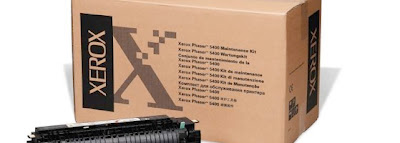ooooooo shiny!





It been a while since I've had some bad design decisions to rant about. Not because they haven't been made, but with the Holidays and travel, I just didn't have a chance to post about them. A couple weeks ago, Xerox unveiled what may be one of the worst corporate redesigns of the decade, created by Interbrand. Admittedly, the Xerox logo was not an icon of classic design like the old logos of UPS or AT&T, but apparently, they felt like the logo they had for more than 45 years said "copiers", and changing their logo to a marble with wires wrapped around it would keep you from thinking "copiers". Right. The strategy is flawed from the start, no matter what the logo is. It's like redesigning the Kleenex logo in hopes of people not thinking "tissues" when they hear "Kleenex". Regardless, to feel "modern" and "current" and supposedly speak to a broader product range, Xerox abandoned its cleanly simple and adaptable logo for, oddly enough, a logo that won't reproduce on a Xerox. Like UPS and AT&T, they have adopted a logo with flashy dimension and gradients in hopes of feeling more modern, though it could be argued that look has already dated itself. Despite the dynamic nature of the letter x, they de-emphasized the tension of that letterform in order to make themselves feel more friendly and approachable. I will admit that the new wordmark alone is not terrible without the red ball wrapped in wires. In 1994, Xerox had adopted a digitized X as its logo (used in conjunction with the existing wordmark). They later quietly dropped this mark, perhaps because pixellation effects were as trite at the time as gradations and swooshes are today. While the old Xerox may not have been a hallmark of corporate identity, I believe the digitized X was. Designed by Landor, it clearly and brilliantly bridged the history of the company with the future, and also referenced applications far beyond those that had anything to do with paper (like copies). With the new cricket ball logo, Xerox has missed an opportunity to redefine itself by reaching into its past in order to communicate its future. The solution was already there in the digitized X. Instead, Xerox has become just a copy of countless trendy logos; not a strategy worth duplicating.
